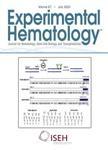版权所有:内蒙古大学图书馆 技术提供:维普资讯• 智图
内蒙古自治区呼和浩特市赛罕区大学西街235号 邮编: 010021

作者机构:German Cancer Research Center (DKFZ) HI-STEM gGmbH Heidelberg University Heidelberg Germany National Center for Tumor Diseases (NCT) Heidelberg German Cancer Research Center (DKFZ) Germany German Cancer Research Center (DKFZ) HI-STEM gGmbH Heidelberg University Germany Karlsruhe Institute of Technology (KIT) Institute for Automation and Applied Informatics (IAI) Germany German Cancer Research Center (DKFZ) HI-STEM gGmbH Germany European Molecular Biology Laboratory (EMBL) Heidelberg University Germany Walter and Eliza Hall Institute of Medical Research Monash University Melbourne Australia European Molecular Biology Laboratory (EMBL) Germany HI-STEM gGmbH German Cancer Research Center (DKFZ) Germany National Center for Tumor Diseases (NCT) Heidelberg German Cancer Research Center (DKFZ) HI-STEM gGmbH Germany German Cancer Research Center (DKFZ) HI-STEM gGmbH Berlin Institute of Health (BIH) Max Delbrück Center for Molecular Medicine (MDC) Charite Berlin Germany
出 版 物:《Experimental Hematology》 (实验血液学)
年 卷 期:2023年第124卷第Sup期
页 面:S86-S86页
学科分类:1001[医学-基础医学(可授医学、理学学位)] 10[医学]
摘 要:Hematopoietic stem cells (HSCs) give rise to progenitors that continuously replenish mature blood and immune cells. Previous studies have revealed extensive heterogeneity within the phenotypic HSC compartment regarding self-renewal capacity, cell cycle activity, transcriptomic programs and functional lineage outcomes of individual HSCs. However, the mechanisms underlying HSC heterogeneity and how heterogenous cell states, molecular programs and functional properties of individual HSCs are related to each other remain poorly understood. In order to unravel these mechanisms, we conducted a comprehensive single-cell analysis of clonal hematopoietic systems derived from 54 single transplanted murine HSCs and linked these data to functional reconstitution outcomes. We examined the sustained engrafting hematopoietic systems across eight immunological organs in-depth, which revealed unique patterns of lineage output, self-renewal capacity and repopulation dynamics. Modeling the repopulation of blood cell types over time identified distinct kinetic patterns of lineage reconstitution, which were directly linked to the self-renewal capacity and the differential repopulation of the hematopoietic stem and progenitor cell compartment. Moreover, single-cell transcriptomic analyses revealed that lineage-, stemness- and dormancy-associated programs, as well as gene regulatory networks were distinctly regulated within the HSC compartment of clonally-derived systems and could partially explain the observed functional heterogeneity. Collectively, our data unveils multiple layers of HSC heterogeneity and identifies reconstitution kinetics as a common underlying denominator.